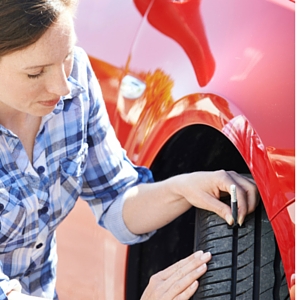Car Care 101

Cars are like people in one respect: they feel the pain of aging. The good news is keeping your car fit can help you avoid big dents in your wallet. Check your owner's manual, listen to your mechanic and use this checklist to see when service is needed.
Air Filters
Did you know your car's air filter keeps dust, leaves and all sorts of gunk from entering and clogging your engine? But they can only take so much. At some point your vehicle can't breathe in enough air to fire properly. Not enough air means too much gas to the engine, and suddenly your ride isn't so smooth, gas mileage goes south, or worse. Why chance it? Either plan on changing the filter yourself, or make sure it's on the list when you have other routine maintenance done.
Regular Oil Changes
Not changing your motor oil and filter regularly is a really bad idea. Oil thickens over time, and it can cause expensive parts of the engine to rub together and wear each other out. Oil also absorbs all kind of gunk from normal engine combustion and eventually gets saturated. Luckily an oil change is one of the easiest ways to keep your engine running longer. While it depends on how you drive and the conditions you drive in, a good benchmark for an oil change is every 3,000 to 5,000 miles. Synthetic oils don't need to be changed that often, and modern non-synthetic oils might have a different manufacturers' change schedule. Refer to your car's Owner's Manual to see what the maintenance schedule is for your car.
Brakes
Sounds funny, but brakes are designed to wear out. That's because they operate by friction, which is literally what stops your car. (If you drive in the hills they wear out faster. More friction, more wear.) So this is one of the most important things on your car maintenance to-do list. Have your brakes checked regularly.
Tire Pressure
After brakes, tires are next in the pecking order. Check your tires every month to ensure your car's stability, and to make sure your car can corner and brake safely. Why every month? Because tire pressure is affected by outside temperature. Pressure that's too high will cause your car to bounce. Low pressure can cause premature wear and worse–tread separation. In addition, the wrong tire pressure can have a negative effect on your gas mileage.
Replacing Power Steering Fluid: Inexpensive and Important
The power steering fluid is the least expensive part of a very expensive power-steering system. Over your car's lifetime, its seals, rings and other components break apart and contaminate the hydraulic fluid. Skimping on changing that fluid when it's recommended may leave you having to replace the really expensive power steering pump or worse, the power steering rack, down the road.
Transmission Fluid
Transmission fluid is different in automatic and manual transmissions, but both need to be replaced at regular intervals, and checked in between those intervals. This fluid degrades and also becomes contaminated from normal transmission functioning, which can lead to shorter transmission life.
Coolant
Coolant (also known as antifreeze in the winter months) is responsible for dissipating that heat through the radiator and heat exchange. Coolant also contains rust inhibitors, which eventually break down. The coolant itself then begins to accumulate bits of rust and debris. If it's not flushed out and replaced, that gunk can clog the cooling passages in the engine and radiator, which can cause your vehicle to overheat.
Drive Axle Boots
The drive axle boot is a pretty inexpensive little rubber part that covers a very expensive and very important component called the constant velocity (CV) joint. If you don't have it inspected, you can miss needed repairs, leading to expensive problems with your CV joint. The rubber will degrade over your car's lifetime, and tears or cracks in it will allow grease to leak out. This will leave that pricey CV joint exposed to the gunk of the road and may ultimately cause it to fail. Then you're stuck with a hefty replacement fee.
Drive Belts
First boots, now belts? Your car can certainly accessorize. If your vehicle is older, it may have many belts driving individual pumps and functions. If it's a newer car, it likely has just one serpentine belt. In either case, these belts are made of rubber. And like the rubber drive axle boot, it eventually wears out. If a belt cracks or breaks, whatever it powers will no longer work—power steering, water pump, alternator…you get the drift.
Timing and Camshaft Drive Belts
Simply put, without these belts your car is a door stop. As a preventative step, your mechanic should periodically inspect these belts for wear and slackness.
Spark Plugs
Spark plugs ignite the gas and air mixture in your engine, which is what powers your car. It's important to have your mechanic take a look at these about every 30,000 miles since it's difficult to replace plugs that are too degraded.
Of course, how you drive and the conditions you drive in will affect the extent of fixes your mechanic will have to address. Regardless, keeping up with these basic maintenance areas according to your owner's manual or a trusted mechanic will mean fewer dents to your wallet and a longer lifespan for your car.
